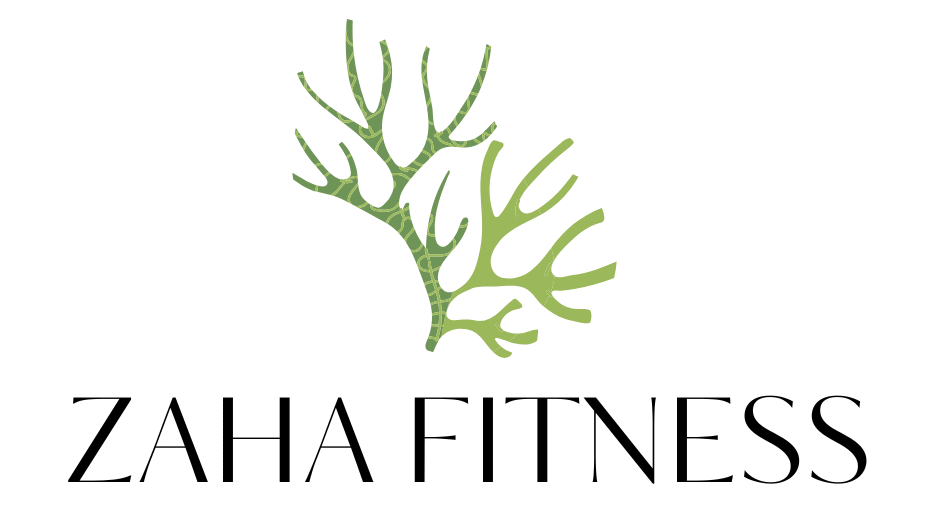Want to lose weight without crash diets or confusion? Exercise is your simplest, most sustainable lever. When you move more—and move smart—you burn calories now, build a metabolism that burns more later, and feel better doing it. This guide gives you a realistic plan, the science you need (no fluff), and quick wins you can start today.

SEO-ready lines:
- Meta Title: Weight Loss Through Exercise: Sweat Smart Plan That Works
- Meta Description: A science-backed, beginner-friendly guide to losing weight through exercise—cardio, strength, HIIT, NEAT, sample schedules, and FAQs.
- Slug: weight-loss-through-exercise
- Target Keywords: weight loss through exercise, lose weight with exercise, best workouts for weight loss, cardio vs strength for fat loss, HIIT for fat loss, NEAT, beginner workout plan
Must Read: 12 Proven Ways to Lose Belly Fat Quickly
Why Exercise Drives Real Weight Loss
Fat loss comes from a sustained calorie deficit—burning more energy than you take in. Exercise helps you create that deficit in three powerful ways:
- Immediate burn: Cardio and circuits use energy now.
- Metabolism boost: Building muscle increases your resting metabolic rate, so you burn more 24/7.
- Afterburn (EPOC): Intense sessions (like HIIT or heavier strength work) elevate post-exercise oxygen consumption for hours.
Bonus benefits: better mood, sleep, appetite regulation, and long-term weight maintenance. That last one is huge—people who keep weight off almost always stay active.
The Big Three: Cardio, Strength, and HIIT
Use them together, not as either/or.
- Steady-State Cardio (walk, jog, cycle, swim)
- What it does: Burns calories, improves heart health, low skill barrier.
- How to use it: 2–4 sessions/week, 20–45 minutes. Mix easy and moderate intensities.
- Best for: Beginners, recovery days, joint-friendly fat loss.
- Strength Training (full-body, 2–4 days/week)
- What it does: Builds/keeps muscle, raises resting metabolism, shapes your body.
- How to use it: Prioritize compound moves (squats, hinges, pushes, pulls). 3 sets of 6–12 reps each, 60–90 seconds rest.
- Best for: Long-term fat loss and a toned look.
- HIIT (High-Intensity Interval Training)
- What it does: Efficient calorie burn in less time + afterburn effect.
- How to use it: 1–2 sessions/week, 10–20 minutes. Example: 30 seconds hard, 60 seconds easy x 8–12 rounds.
- Best for: Time-crunched days. Avoid daily HIIT—it’s taxing.
Must Read: The 10 Best Vegan Meal Delivery Services in 2025
Quick Snapshot: What Burns How Much?
Approximate calories burned in 30 minutes for a 70 kg (154 lb) person. Your numbers vary by body size, fitness, and effort.
| Activity (30 min) | Calories Burned | Notes |
|---|---|---|
| Brisk walk (4 mph / 6.4 km/h) | 150–180 | Great daily base, joint-friendly |
| Running (6 mph / 9.6 km/h) | 300–380 | Scales fast with pace |
| Cycling (moderate) | 240–320 | Low-impact, easy to progress |
| Rowing (moderate) | 250–320 | Full-body cardio |
| Strength circuit | 180–250 | Burn + build simultaneously |
| HIIT intervals | 280–450 | Short, intense—recover well after |
Tip: Burn is one part of the story. Strength preserves muscle, which keeps your metabolism up while you’re losing fat.

NEAT: The Silent Fat-Burner You’re Missing
NEAT = Non-Exercise Activity Thermogenesis. It’s everything that isn’t a workout: steps, chores, fidgeting, taking the stairs. It can add up to hundreds of extra calories per day—without feeling like a workout.
- Aim for 7,000–10,000 steps/day (or add 1,500–2,000 to your current average).
- Stack habits: stand during calls, park farther, short walking breaks after meals.
- Keep a water bottle nearby—more sips, more steps.
Must Read: 9 Benefits of Protein for Health and Athletic Performance
Your Weekly Game Plan
Choose the level that fits your schedule and current fitness. Progress by adding time, reps, or weight each week.
Beginner (4–5 days/week)
- 2x Full-Body Strength (30–40 min): Squat or sit-to-stand, hinge (hip hinge or light deadlift), push (push-ups or press), pull (row), core (planks). 2–3 sets of 8–12 reps.
- 2x Cardio (20–30 min): Brisk walking, cycling, or swimming at a conversational pace.
- Daily NEAT: 7–10k steps, stretch 5–8 minutes.
Intermediate (5–6 days/week)
- 3–4x Strength (Upper/Lower split or Full-Body): Add load or reps weekly (progressive overload).
- 1–2x Cardio/HIIT: One moderate 30–40 min session + one short HIIT session (e.g., 12 rounds: 30s hard/60s easy).
- Mobility once/week, plus steps goal.
Time-Crunched (3–4 days/week)
- 2x Strength (35–45 min): Superset pairs to save time (e.g., squat + row; push + hinge).
- 1–2x Cardio/HIIT (15–20 min): Bike sprints or brisk incline walk.
- NEAT: Move every hour, even for 3–5 minutes.
Must Read: 8 Morning Routine Habits That Will Change Your Life
Progressive Overload: The Secret Sauce
Fat loss slows if your body adapts and nothing changes. Progress one variable at a time:
- Reps: Add 1–2 reps per set.
- Load: Add 2–5% more weight.
- Sets: Add one extra set for big lifts.
- Rest: Trim rest by 10–15 seconds.
- Tempo: Slow the lowering phase (3–4 seconds) for more challenge.
Nutrition That Fuels Fat Loss (Without Obsession)
You can’t out-train a chronic calorie surplus. Pair your workouts with smart, doable nutrition:
- Modest deficit: 300–500 kcal below maintenance for steady, sustainable loss.
- Protein anchor: About 1.6–2.2 g/kg body weight daily helps preserve muscle and keep you fuller.
- Plants and fiber: 25–35 g fiber/day from veggies, fruit, legumes, whole grains.
- Smart carbs and fats: Choose whole-food carbs (oats, rice, potatoes, fruit) and healthy fats (olive oil, nuts, avocado).
- Hydration: Often mistaken hunger is thirst. Aim for pale yellow urine.
- 80/20 approach: 80% nutrient-dense foods, 20% flexible enjoyment.
Must Read: The 10 Best Vegan Meal Delivery Services in 2025
Recovery: Where Results Actually Sink In
- Sleep: 7–9 hours. Poor sleep can increase hunger and reduce training performance.
- Stress management: Walks, breathwork, or short meditation keep cravings in check.
- Rest days: They repair tissue and restore motivation. You grow stronger between workouts.
How to Track Progress (So You Actually See It)
- Data, not vibes: Use 2–3 measures weekly:
- Weight (3–4x/week, morning average), and/or
- Girths (waist, hips), and/or
- Progress photos + how clothes fit, and/or
- Performance (reps, weights, pace).
- Adjust every 2–3 weeks: If progress stalls, add ~10% more weekly movement or trim 100–200 kcal/day.
Common Mistakes to Avoid
- Only doing cardio: You’ll burn calories but risk losing muscle. Include strength training.
- All-out HIIT, every day: Recovery tanks; fat loss stalls. Cap HIIT at 1–2 sessions/week.
- Tiny meals, huge hunger: Leads to binges. Prioritize protein, fiber, and volume.
- Chasing sweat, not progression: Intensity ≠ progress. Track reps, sets, and load.
10-Minute Quick Starts
- Bodyweight burner: 2 rounds — 45s squats, 45s push-ups (incline if needed), 45s glute bridge, 45s plank; 30s rest between.
- Walk sprint: 10 x 30s brisk walk + 60s easy stroll.
- Mini mobility: 1 minute each — hip circles, thoracic rotations, hamstring hinges, ankle rocks, cat-cows, shoulder dislocates, deep squat holds, calf stretch, chest opener, neck resets.
Safety note: If you have medical conditions or injuries, check with a healthcare professional before starting a new program.
Conclusion
You don’t need a perfect plan—you need a consistent one. Blend strength for muscle, cardio for burn and heart health, a touch of HIIT for efficiency, and NEAT to keep your daily engine humming. Pair that with a modest calorie deficit, plenty of protein, solid sleep, and small weekly progressions. That’s how you lose weight through exercise—and keep it off—without burning out.
FAQs
Q1: What’s better for weight loss—cardio or strength training?
- Both. Cardio burns more during the session; strength preserves/builds muscle so your metabolism stays higher over time. Combine them for best results.
Q2: How many days a week should I work out to lose weight?
- Aim for 3–5 days/week total: 2–3 strength days + 1–3 cardio/HIIT sessions, plus daily steps. More isn’t always better—consistency wins.
Q3: Can I lose weight with exercise alone, without changing my diet?
- Possible, but harder. Most people find it easier and faster to combine a modest calorie deficit (300–500 kcal/day) with regular exercise.

Zain Ul Hassan is the founder of Zaha Fitness. He writes practical, research-backed articles on fitness, weight loss, and natural health. His goal is to help people live healthier lives using simple and effective tips.

